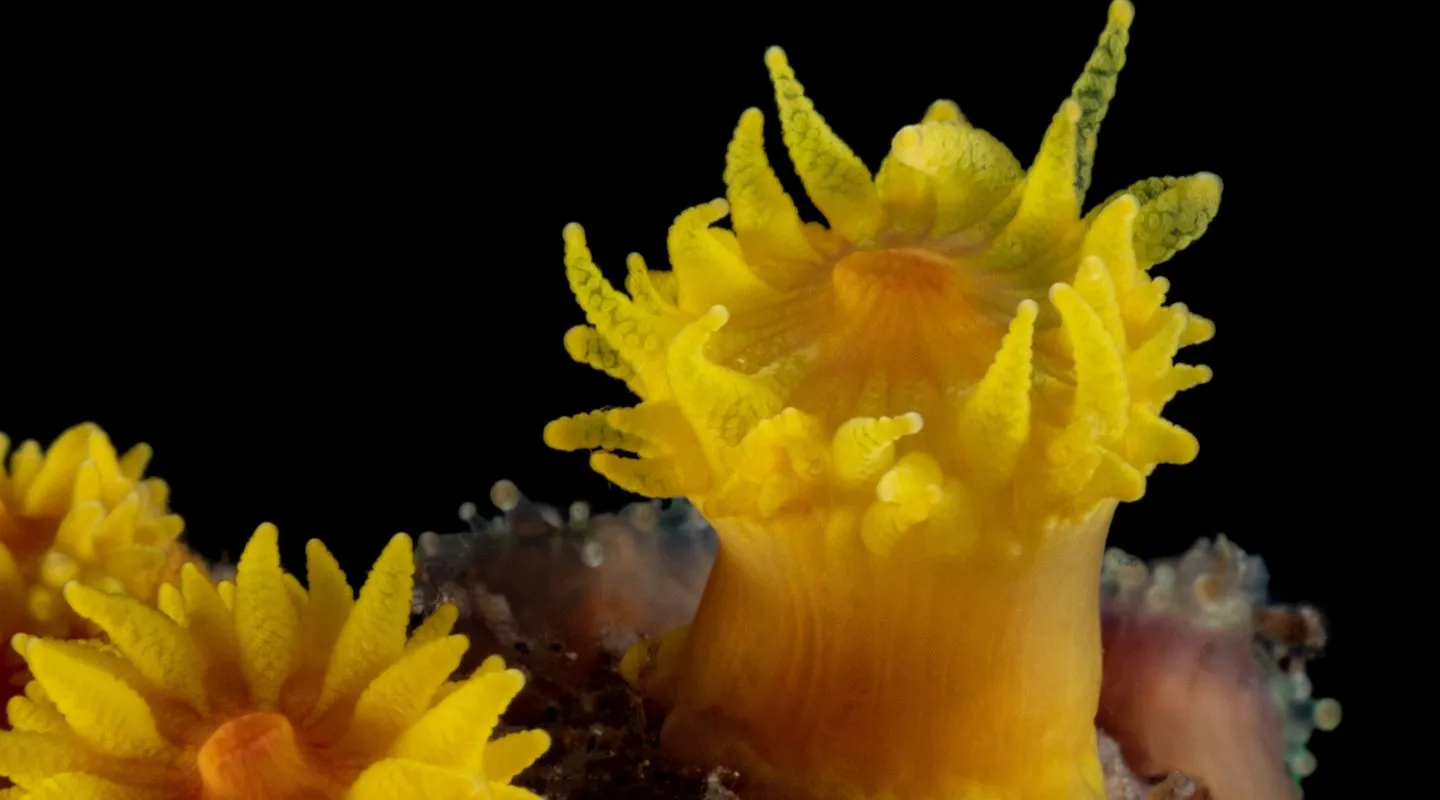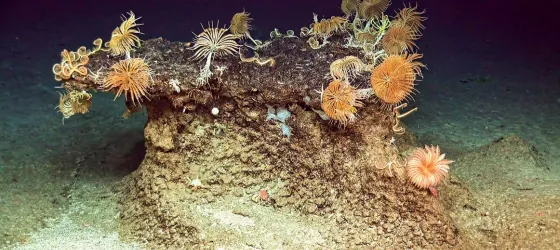It is ahermatypic, meaning that it can prosper without the aid of symbiotic algae called zooxanthellae.
But it is not a reef-building coral. Its survival therefore depends only on the food it captures when the polyp is extended. This species has recently colonised areas of the Western Tropical Atlantic and the Caribbean, and is rapidly spreading to the Gulf of Mexico following the installation of offshore oil drilling platforms.
Where is the animal to be found?
They live at depths of between 1 and 37 metres. Orange cup corals live in shady areas, often at entrances to caves or in shipwrecks, in plankton-rich waters and at temperatures ranging from 23 to 26ºC.Orange cup coral does not require much light and can grow in dark areas, thus forming splashes of colour … provided it has a plentiful supply of food.
The yellow sea snail, (Epidendrium billeeanum) is a gastropod that lives exclusively on this coral. It feeds on the coral and lays its eggs in it.
How can it be recognised?
A colony is able to reproduce asexually when a polyp develops from the “mother colony”: it then grows from the foot of another polyp and is incorporated into the colony. The sexes are separate (gonochoristic species): the males release sperm into the water, which is captured by the females. They can measure up to 10 cm in diameter. The base is cup-shaped and 1.5 cm long.
What is distinctive about it?
Fertilisation and the development of larvae takes place in the cavity of the individual females. The larvae are released once they are fully formed. They then leave the colony and fix themselves elsewhere, thus founding a new colony. This coral feeds mainly on zooplankton. The polyps generally come out at night when the plankton is most abundant, or in choppy waters. The polyps all feed themselves individually. These are known as “voracious” corals as the polyps stay out of their skeletons in the capturing position longer than with other species.









